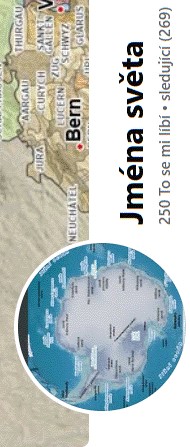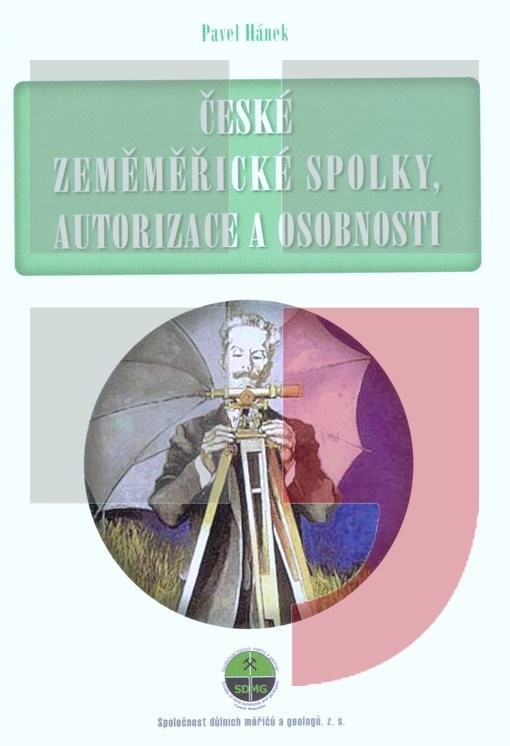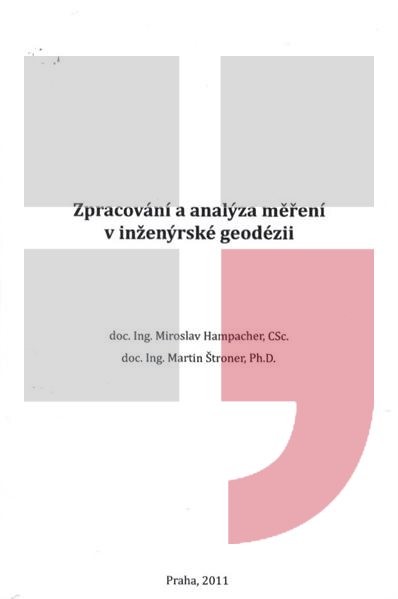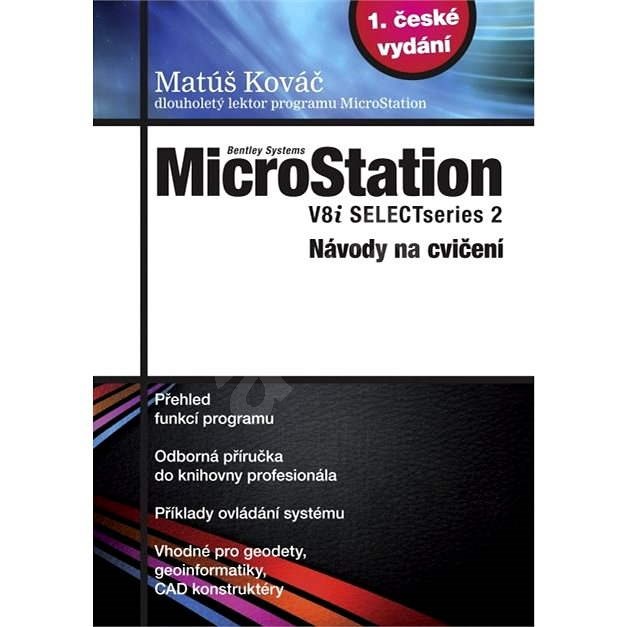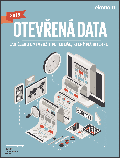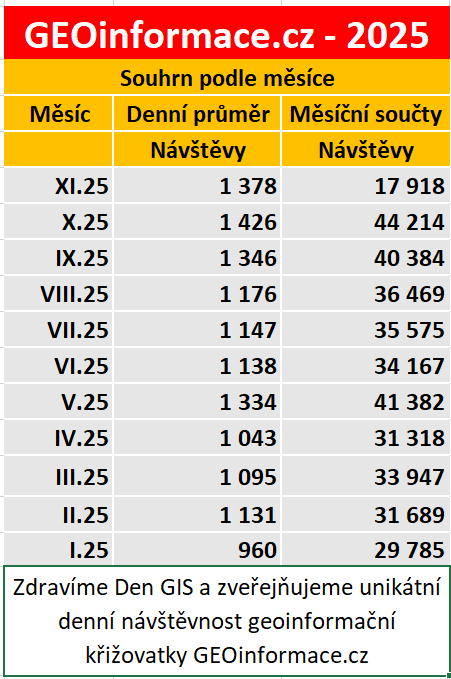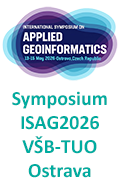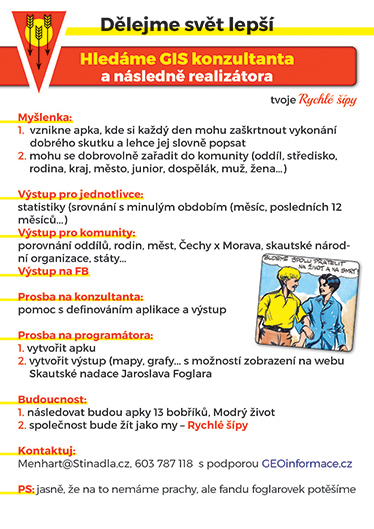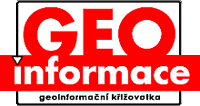zprávy
zdroje zpráv:Vedoucí oddělení právních vztahů k nemovitostem Katastrálního pracoviště Prachatice
11.1.2016 12:38 ČÚZK - volná místa /Urady/Katastralni-urady/Katastralni-urady/Katastralni-urad-pro-Jihocesky-kraj/Uredni-deska/Oznameni-a-jina-uredni-sdeleni/Volna-mista/Vedouci-oddeleni-pravnich-vztahu-k-nemovitostem-KaVedoucí právního oddělení Katastrálního pracoviště České Budějovice
11.1.2016 12:36 ČÚZK /Urady/Katastralni-urady/Katastralni-urady/Katastralni-urad-pro-Jihocesky-kraj/Uredni-deska/Oznameni-a-jina-uredni-sdeleni/Volna-mista/Vedouci-ho-pravniho-oddeleni-Katastralniho-pracoviVedoucí právního oddělení Katastrálního pracoviště České Budějovice
11.1.2016 12:36 ČÚZK - volná místa /Urady/Katastralni-urady/Katastralni-urady/Katastralni-urad-pro-Jihocesky-kraj/Uredni-deska/Oznameni-a-jina-uredni-sdeleni/Volna-mista/Vedouci-ho-pravniho-oddeleni-Katastralniho-pracoviVedoucí právního oddělení Katastrálního pracoviště České Budějovice
11.1.2016 12:36 ČÚZK - předpisy a opatření /Urady/Katastralni-urady/Katastralni-urady/Katastralni-urad-pro-Jihocesky-kraj/Uredni-deska/Oznameni-a-jina-uredni-sdeleni/Volna-mista/Vedouci-ho-pravniho-oddeleni-Katastralniho-pracoviDen GIS zaznamenal rekordní zájem
11.1.2016 12:27 ARCDATAZájemci o GIS měli v letošním roce opět mnoho možností, kde čerpat inspiraci i nové vědomosti. Pořadatelé na mnoha místech zorganizovali jednodenní i vícedenní programy pro děti a dospělé, které měly za úkol pobavit i vzdělávat.
Jaké byly ohlasy, co všechno bylo k vidění a jak vše hodnotí samotní organizátoři? To se dočtete v závěrečných zprávách z jednotlivých Dnů GIS. Jak vše zaznamenaly fotoaparáty organizátorů, si můžete navíc prohlédnout na hlavní facebookové stránce akce.
Deset let smrtelných nehod v USA (interaktivní mapa)
11.1.2016 12:07 GISportal.cz Max Galka na svém webu Metrocosm publikuje různé projekty, které mapují život pomocí statistik a dat. V tomto případě vám představujeme interaktivní mapu, která mapuje spíše opak života – smrtelné automobilové nehody ve Spojených státech ...UtilityReport bez omezení jen pro registrované uživatele
11.1.2016 12:00 Hrdlička Od 1. 2. 2016 bude služba UtilityReport pro celé území ČR (bez omezení) přístupná pouze registrovaným uživatelům, a to po zaplacení poplatku za registraci a provoz. Bezplatné použití služby (bez registrace) bude nadále možné v oblastech s podporou zapojených měst a krajů. Více na http://cz.mawis.eu/sluzby/e-utilityreport.V datech územně analytických p
11.1.2016 12:00 Plzeňský kraj V datech územně analytických podkladů Plzeňského kraje byla provedena kompletní aktualizace dat o železniční síti od poskytovatele Správa železniční dopravní cesty (http://geoportal.plzensky-kraj.cz/gs/rss?url=http%3A%2F%2Fgeoportal.plzensky-kraj.cz%2Ftw%2Fost%2Fgp%2Fuap%2Fposkytovatele%2Findex.php%3Fframe%26ID%3D418). Jedná se o aktualizaci stavu dat k 5. 1. 2016.V datech územně analytických p
11.1.2016 12:00 Plzeňský kraj V datech územně analytických podkladů Plzeňského kraje byla provedena kompletní aktualizace dat o železniční síti od poskytovatele Správa železniční dopravní cesty. Jedná se o aktualizaci stavu dat k 5. 1. 2016.Odborný rada – rozhodování o povolení vkladu
11.1.2016 10:32 ČÚZK /Urady/Katastralni-urady/Katastralni-urady/Katastralni-urad-pro-Kralovehradecky-kraj/Volna-mista/Odborny-rada-–-rozhodovani-o-povoleni-vkladuOdborný rada – rozhodování o povolení vkladu
11.1.2016 10:32 ČÚZK - předpisy a opatření /Urady/Katastralni-urady/Katastralni-urady/Katastralni-urad-pro-Kralovehradecky-kraj/Volna-mista/Odborny-rada-–-rozhodovani-o-povoleni-vkladuOdborný rada – rozhodování o povolení vkladu
11.1.2016 10:32 ČÚZK - volná místa /Urady/Katastralni-urady/Katastralni-urady/Katastralni-urad-pro-Kralovehradecky-kraj/Volna-mista/Odborny-rada-–-rozhodovani-o-povoleni-vkladuUtilityReport pro registrované uživatele
11.1.2016 9:53 HrdličkaThe post UtilityReport pro registrované uživatele appeared first on HRDLIČKA spol. s r.o. - komplexní služby v oblasti geodézie.
UtilityReport bez omezení pro registrované uživatele
11.1.2016 9:53 HrdličkaThe post UtilityReport bez omezení pro registrované uživatele appeared first on HRDLIČKA spol. s r.o. - komplexní služby v oblasti geodézie.
Změny v poskytování údajů ze sbírky listin katastru nemo
11.1.2016 8:12 ČÚZK - předpisy a opatření /Aktuality-resort/Aktuality-WEB/Zmeny-v-poskytovani-udaju-ze-sbirky-listin-katastr2016
11.1.2016 7:59 ČÚZK - předpisy a opatření /Urady/Katastralni-urady/Katastralni-urady/Katastralni-urad-pro-Zlinsky-kraj/Rozpocet/20162016
11.1.2016 7:59 ČÚZK /Urady/Katastralni-urady/Katastralni-urady/Katastralni-urad-pro-Zlinsky-kraj/Rozpocet/2016Operativní plán v Národním parku Šumava
11.1.2016 1:00 Cenia - Katalog metadat ČR - INSPIRE Datová sada traumatologických bodů- vymezuje traumatologické body, které se vyskytují v Národním parku Šumava. Tyto traumatologické body pomáhají v terénu k lokalizaci člověka v tísni.Datová sada zdrojů vody -vymezuje zdroje vody pro IZS, HZS, případně také pro vrtulníky těchto složekLesní hospodářský plán - LHC ÚP Stožec (LHC 284212)
11.1.2016 1:00 Cenia - Katalog metadat ČR - INSPIRE O všechny lesy ve vlastnictví státu je podle zákona o lesích č. 289/1995 Sb. pečováno na základě lesních hospodářských plánů nebo-li LHP. LHP jsou zákonným nástrojem pro vlastníka nebo správce státního majetku, který umožňuje efektivní péči o lesní majetek.LHP jsou vyhotoveny v souladu s § 24 a s využitím § 36 zákona č. 289/1995 Sb., o lesích a o změně a doplnění některých zákonů ve znění pozdějších předpisů (dále jen „zákon o lesích“), dle vyhlášky MZe č. 84/1996 Sb. o lesním hospodářském plánování. Obsahují náležitosti uvedené ve výše uvedených zákonných předpisech a předepsané přílohy. LHP jsou schvalována MŽP. Data LHP v datovém formátu XML jsou předávána do datového skladu ÚHÚL se sídlem v Brandýse nad Labem."Výsledkem je z hlediska digitálních GIS dat zejména - hospodářská kniha, grafická část LHPHospodářská kniha - popisuje stav lesa v jednotkách prostorového rozdělení lesa (JPRL) (tabulka s jednotlivými atributy)Grafická část - geografické znázornění JPRL v rastrové podobě (lesnická obrysová mapa porostní, lesnická mapa porostní - měřítko 1:10000)Rastrové podobě předchází vektorizace JPRL (porostní detail ve vektorové podobě s atributy vyjadřujcími zejména označení JPRL)Propojení hospodářské knihy s grafickou částí LHP je umožněno relačním způsobem.Ortofotomapa NP a CHKO Šumava - 2015
11.1.2016 1:00 Cenia - Katalog metadat ČR - INSPIRE Ortofotomapa v přirozených barvách (R,G,B) i ortofomapa s náhradou R kanálu kanálem NIR.Pořizována v kladu mapových listů Státní mapy 1 : 5 000 (2 x 2,5 km).Pixel: 20 cmZónace Národního parku Šumava
11.1.2016 1:00 Cenia - Katalog metadat ČR - INSPIRE Zónace Národního parku Šumava rozděluje dle Zákona o ochraně přírody a krajiny č. 114/1992 Sb., v platném znění, území Národního parku Šumava do třech zón.I. zóna - přísná přírodní, zahrnuje nejcennější a nejstabilnější území s přirozenými ekosystémy - pralesovité zbytky lesů, mokřady a vrchovištní rašeliny. Území I. zóny je ponecháno přirozenému vývoji bez ovlivňování člověkem.II. zóna - řízená přírodní, zahrnuje zbývající převážnou část lesních a ostatních ekosystémů s různým stupněm skladby a stavu porostů od původních, změněných až po silně poškozené a geneticky nevhodné. Cílem veškeré činnosti je udržení přírodní rovnováhy a postupné přibližování stávajících ekosystémů (cestou usměrňování a rekonstrukce) přirozeným společenstvům.III. zóna - okrajová, zahrnuje území člověkem značně pozměněná a střediska soustředěné zástavby. Cílem je udržet a podporovat využívání této zóny pro trvalé bydlení, služby, zemědělství, turistiku a rekreaci, pokud to není v rozporu s posláním národního parku.Platná zónace je již značně zastaralá (rok 1995), odpovídá tomu i přesnost digitální vrstvy.Managementy v Národním parku Šumava - dílčí plochy
11.1.2016 1:00 Cenia - Katalog metadat ČR - INSPIRE Dílčí plochy jsou stanoveny Příkazem ředitele č. 117/2015 - o způsobu péče o ekosystémy NPŠ v dílčích plochách.Dílčí plocha A, B - území ponechané samovolnému vývojiDílčí plocha C - území s možností speciálních opatření proti šíření kůrovceDílčí plocha D1 - území s rekonstrukčním managementem postupně vedoucím k vysokému stupni autoregulaceDílčí plocha D2 - území převážně přírodě blízkých lesů s rekonstrukčním managementemDílčí plocha D3 - území s uplatňováním řízeného managementu vedoucího v dlouhodobém horizontu desítek let k přírodě blízkému stavu lesních ekosystémůDílčí plocha E, F - nelesní plochyDílčí plocha G - zastavěná a zastavitelná územíLesní hospodářský plán - LHC ÚP Borová Lada (LHC 213208)
11.1.2016 1:00 Cenia - Katalog metadat ČR - INSPIRE O všechny lesy ve vlastnictví státu je podle zákona o lesích č. 289/1995 Sb. pečováno na základě lesních hospodářských plánů nebo-li LHP. LHP jsou zákonným nástrojem pro vlastníka nebo správce státního majetku, který umožňuje efektivní péči o lesní majetek.LHP jsou vyhotoveny v souladu s § 24 a s využitím § 36 zákona č. 289/1995 Sb., o lesích a o změně a doplnění některých zákonů ve znění pozdějších předpisů (dále jen „zákon o lesích“), dle vyhlášky MZe č. 84/1996 Sb. o lesním hospodářském plánování. Obsahují náležitosti uvedené ve výše uvedených zákonných předpisech a předepsané přílohy. LHP jsou schvalována MŽP. Data LHP v datovém formátu XML jsou předávána do datového skladu ÚHÚL se sídlem v Brandýse nad Labem."Výsledkem je z hlediska digitálních GIS dat zejména - hospodářská kniha, grafická část LHPHospodářská kniha - popisuje stav lesa v jednotkách prostorového rozdělení lesa (JPRL) (tabulka s jednotlivými atributy)Grafická část - geografické znázornění JPRL v rastrové podobě (lesnická obrysová mapa porostní, lesnická mapa porostní - měřítko 1:10000)Rastrové podobě předchází vektorizace JPRL (porostní detail ve vektorové podobě s atributy vyjadřujcími zejména označení JPRL)Propojení hospodářské knihy s grafickou částí LHP je umožněno relačním způsobem.Lesní hospodářský plán - NPŠ LHC Srní (LHC 383205)
11.1.2016 1:00 Cenia - Katalog metadat ČR - INSPIRE O všechny lesy ve vlastnictví státu je podle zákona o lesích č. 289/1995 Sb. pečováno na základě lesních hospodářských plánů nebo-li LHP. LHP jsou zákonným nástrojem pro vlastníka nebo správce státního majetku, který umožňuje efektivní péči o lesní majetek.LHP jsou vyhotoveny v souladu s § 24 a s využitím § 36 zákona č. 289/1995 Sb., o lesích a o změně a doplnění některých zákonů ve znění pozdějších předpisů (dále jen „zákon o lesích“), dle vyhlášky MZe č. 84/1996 Sb. o lesním hospodářském plánování. Obsahují náležitosti uvedené ve výše uvedených zákonných předpisech a předepsané přílohy. LHP jsou schvalována MŽP. Data LHP v datovém formátu XML jsou předávána do datového skladu ÚHÚL se sídlem v Brandýse nad Labem."Výsledkem je z hlediska digitálních GIS dat zejména - hospodářská kniha, grafická část LHPHospodářská kniha - popisuje stav lesa v jednotkách prostorového rozdělení lesa (JPRL) (tabulka s jednotlivými atributy)Grafická část - geografické znázornění JPRL v rastrové podobě (lesnická obrysová mapa porostní, lesnická mapa porostní - měřítko 1:10000)Rastrové podobě předchází vektorizace JPRL (porostní detail ve vektorové podobě s atributy vyjadřujcími zejména označení JPRL)Propojení hospodářské knihy s grafickou částí LHP je umožněno relačním způsobem.Chráněná krajinná oblast Šumava - hranice
11.1.2016 1:00 Cenia - Katalog metadat ČR - INSPIRE Hranice Chráněné krajinné oblasti ŠumavaHranice maloplošně zvláště chráněných území - CHKO Šumava
11.1.2016 1:00 Cenia - Katalog metadat ČR - INSPIRE Hranice maloplošně zvláště chráněných území v Chráněné krajinné oblasti ŠumavaVodácké úseky v NP Šumava
11.1.2016 1:00 Cenia - Katalog metadat ČR - INSPIRE Vodácké trasy v NP Šumava, jejichž režim je dán Návštěvním řádem NP Šumava.Úseky:Borová Lada - PolkaLenora - Soumarský MostSoumarský Most - most u Pěknémost u Pěkné - Nová PecModrava - AntýglČeňkova Pila - RejštejnArnika a VÚKOZ - Aleje a stromořadí
11.1.2016 1:00 Cenia - Katalog metadat ČR - INSPIRE Mapová kompozice vrstvy význačných alejí české krajiny jejichž tvůrcem je Výzkumný ústav Silva Taroucy pro krajinu a okrasné zahradnictví, v. v. i. vznikly v rámci grantu Ministerstva kultury "MKČR - NAKI - DF12PO1OVV050". Další vrstva zobrazuje aleje a stromořadí v Moravskoslezském, Olomouckém a Zlínském kraji, jejímž tvůrcem je Centrum pro podporu občanů Arnika (Arnika - Aleje a stromořadí).Lesní hospodářský plán - LHC ÚP Modrava (LHC 303214)
11.1.2016 1:00 Cenia - Katalog metadat ČR - INSPIRE O všechny lesy ve vlastnictví státu je podle zákona o lesích č. 289/1995 Sb. pečováno na základě lesních hospodářských plánů nebo-li LHP. LHP jsou zákonným nástrojem pro vlastníka nebo správce státního majetku, který umožňuje efektivní péči o lesní majetek.LHP jsou vyhotoveny v souladu s § 24 a s využitím § 36 zákona č. 289/1995 Sb., o lesích a o změně a doplnění některých zákonů ve znění pozdějších předpisů (dále jen „zákon o lesích“), dle vyhlášky MZe č. 84/1996 Sb. o lesním hospodářském plánování. Obsahují náležitosti uvedené ve výše uvedených zákonných předpisech a předepsané přílohy. LHP jsou schvalována MŽP. Data LHP v datovém formátu XML jsou předávána do datového skladu ÚHÚL se sídlem v Brandýse nad Labem."Výsledkem je z hlediska digitálních GIS dat zejména - hospodářská kniha, grafická část LHPHospodářská kniha - popisuje stav lesa v jednotkách prostorového rozdělení lesa (JPRL) (tabulka s jednotlivými atributy)Grafická část - geografické znázornění JPRL v rastrové podobě (lesnická obrysová mapa porostní, lesnická mapa porostní - měřítko 1:10000)Rastrové podobě předchází vektorizace JPRL (porostní detail ve vektorové podobě s atributy vyjadřujcími zejména označení JPRL)Propojení hospodářské knihy s grafickou částí LHP je umožněno relačním způsobem.ÚSES - územní systém ekologické stability (NP a CHKO Šumava)
11.1.2016 1:00 Cenia - Katalog metadat ČR - INSPIRE Územní systém ekologické stability krajiny (ÚSES) definuje zákon č. 114/1992 Sb., o ochraně přírody a krajiny, v § 3 písm. a) jako vzájemně propojený soubor přirozených i pozměněných, avšak přírodě blízkých ekosystémů, které udržují přírodní rovnováhu.Cílem územních systémů ekologické stability je zejména:-vytvoření sítě relativně ekologicky stabilních území,ovlivňujících příznivě okolní,-ekologicky méně stabilní krajinu,zachování či znovuobnovení přirozeného genofondu krajiny,-zachování či podpoření rozmanitosti původních biologických druhů a jejich společenstev (biodiverzity). Vytváření územního systému ekologické stability je podle § 4 odst. (1) zákona č. 114/1992 Sb. veřejným zájmem, na kterém se podílejí vlastníci pozemků, obce i stát.Podle biogeografického významu rozlišujeme:-místní (lokální),-regionální a- nadregionální úroveň územního systému ekologické stability.Plán ÚSES je nedílnou součástí každého územního plánu, je to územně analytický podklad.Národní park Šumava - hranice
11.1.2016 1:00 Cenia - Katalog metadat ČR - INSPIRE Hranice Národního parku ŠumavaHodnocení stavu lesa nad ortofotomapou - 2006-aktuální období
11.1.2016 1:00 Cenia - Katalog metadat ČR - INSPIRE Hodnocení stavu lesa probíhá každoročně od roku 2006 přírůstkovou vektorizací viditelných změn nad ortofotomapou (ruční vektorizace). Období se neshoduje s kalendářním rokem, stanovilo se s ohledem na lesnické práce cca od září do září.Ortofotomapa je přizpůsobena (zpracována) s ohledem na dobrou viditelnost změn v lesních porostech. Pro lepší kontrast je tedy provedena náhrada kanálu R (RED) kanálem NIR (blízké infračervené pásmo).V roce 2006 se provedla první základní vektorizace, která byla referenční (odrazový můstek). Hodnotily se veškeré změny (proti stojícímu lesu) bez ohledu na rok vzniku, změny byly samozjřejmě konfrontovány se starší ortofotomapou, LHP, a dalšími mapovými podklady, aby nedošlo k označení např. bezlesích ploch, které jsou "přirozeně" bezlesé). Až následující hodnocení stavu lesa mohlo ukázat na to, že se změna stala v období předchozího roku.Hodnotí se:Suchý les stojící, suchý les ležící, plochy po těžbě či disturbaních s ponechou hmotou (rozlišuje se asanovaná, neasanovaná), plochy po těžbě či disturbancích bez ponechání hmoty, polomy.Hodnotí se každé viditelné změny, tedy i např. přesun hodnocené části lesa z kategorie "suchý stojící les" v dalším období do kategorie "suchý ležící les".Územní pracoviště v Národním parku Šumava
11.1.2016 1:00 Cenia - Katalog metadat ČR - INSPIRE Územní pracoviště v Národním parku Šumava, kde jednotlivá pracoviště hospodaří zejména na pozemcích určených k plnění funkcí lesa.Hipostezka v NP Šumava
11.1.2016 1:00 Cenia - Katalog metadat ČR - INSPIRE Stezka pro koně v úseku Lenora - Radvanovice - Stožec - Jelení Vrchy - Nová PecZónace Chráněné krajinné oblasti Šumava
11.1.2016 1:00 Cenia - Katalog metadat ČR - INSPIRE Zónace Chráněné krajinné oblasti Šumava rozděluje na základě Zákona o ochraně přírody a krajiny č. 114/1992 Sb., v platném znění, území CHKO Šumava do čtyřech zón (prováděcí vyhláška MŽP č.422/2001 Sb.)I.zóna představuje pozemky a lesní porosty, které jsou součástí tzv. maloplošných zvláště chráněných území, které lze označit za přírodní či za přírodě blízké. Rovněž jsou zde zahrnuty biotopy s vysokou druhovou rozmanitostí a trvalým výskytem kriticky a silně ohrožených rostlinných druhů a významných živočišných druhů9,8% plochy CHKOII. zóna zahrnuje pozemky rozmanité polopřírodní a polokulturní krajiny. Z velké části jde o pozemky dlouhodobě hospodářsky přeměňované, nicméně technologie využívání přírodních zdrojů nebo jejich užívání v posledních cca 50 až 100 letech směřovaly k vytvoření druhově a strukturálně rozmanitých biotopů. Jsou zde rovněž zahrnuty pozemky a lesní porosty, které splňují kritéria zařazení do I. zón, jejich rozloha je buď příliš malá (méně než 3 ha), nebo je jejich přesné vymezení nemožné (mozaikovitě rozmístěné části větších pozemků), nebo nebyl nalezen konsensus s vlastníkem či správcem uvedených pozemků k zařazení do I. zóny.39,8% plochy CHKOIII.zóna představuje území určená nebo užívaná pro neomezované tradiční hospodářské aktivity. Je zde možná intenzivní zemědělská i lesnická výroba, druhová i strukturální rozmanitost je nízká. Rovněž jsou zde zahrnuta území sice přírodně velmi hodnotná (splňující kritéria pro zařazení do II. zóny), ovšem s jiným režimem, který překrývá zájem ochrany přírody (lesy vojenského újezdu, rozsáhlé obory, velké vodní nádrže apod.), nebo území, pro která nebyl nalezen konsensus s vlastníkem či správcem uvedených pozemků k zařazení do II. zóny.44,2% plochy CHKOIV.zóna je pros...Lyžařské trasy v NP a CHKO Šumava
11.1.2016 1:00 Cenia - Katalog metadat ČR - INSPIRE Lyžařské trasy vektorizované dle Návštěvního řádu Národního parku Šumava a map KČTLesní hospodářský plán - LHC NPŠ LS České Žleby (LHC 210210)
11.1.2016 1:00 Cenia - Katalog metadat ČR - INSPIRE O všechny lesy ve vlastnictví státu je podle zákona o lesích č. 289/1995 Sb. pečováno na základě lesních hospodářských plánů nebo-li LHP. LHP jsou zákonným nástrojem pro vlastníka nebo správce státního majetku, který umožňuje efektivní péči o lesní majetek.LHP jsou vyhotoveny v souladu s § 24 a s využitím § 36 zákona č. 289/1995 Sb., o lesích a o změně a doplnění některých zákonů ve znění pozdějších předpisů (dále jen „zákon o lesích“), dle vyhlášky MZe č. 84/1996 Sb. o lesním hospodářském plánování. Obsahují náležitosti uvedené ve výše uvedených zákonných předpisech a předepsané přílohy. LHP jsou schvalována MŽP. Data LHP v datovém formátu XML jsou předávána do datového skladu ÚHÚL se sídlem v Brandýse nad Labem."Výsledkem je z hlediska digitálních GIS dat zejména - hospodářská kniha, grafická část LHPHospodářská kniha - popisuje stav lesa v jednotkách prostorového rozdělení lesa (JPRL) (tabulka s jednotlivými atributy)Grafická část - geografické znázornění JPRL v rastrové podobě (lesnická obrysová mapa porostní, lesnická mapa porostní - měřítko 1:10000)Rastrové podobě předchází vektorizace JPRL (porostní detail ve vektorové podobě s atributy vyjadřujcími zejména označení JPRL)Propojení hospodářské knihy s grafickou částí LHP je umožněno relačním způsobem.Přechodové body CZ/D, CZ/A
11.1.2016 1:00 Cenia - Katalog metadat ČR - INSPIRE Projekt Správy NP Šumava - zhuštění stávajících hraničních přechodů novými přechodovými body pro turisty.Cyklostezky v NP Šumava
11.1.2016 1:00 Cenia - Katalog metadat ČR - INSPIRE Projekt Správy NP Šumava. Aktuálně je cyklostezkami vyřešen úsek mezi Gerlovou Hutí a Srní.Gerlova Huť - Nová Hůrka - Skelná - Vysoké Lávky - Prášily - Velký Bor - SrníOrtofotomapa NP Šumava - 2014
11.1.2016 1:00 Cenia - Katalog metadat ČR - INSPIRE Ortofotomapa v přirozených barvách (R,G,B) i ortofomapa s náhradou R kanálu kanálem NIR.Pořizována v kladu mapových listů Státní mapy 1 : 5 000 (2 x 2,5 km).Pixel: 20 cmPěší trasy v NP a CHKO Šumava
11.1.2016 1:00 Cenia - Katalog metadat ČR - INSPIRE Pěší trasy vektorizované dle map KČTDigitální model reliéfu - DMR Šumava - 2007
11.1.2016 1:00 Cenia - Katalog metadat ČR - INSPIRE Digitální model reliéfu vytvořen stereoskopicky ze steropárů v rozlišení 5m / pixel na celém území Národního parku Šumava.Význačné aleje české krajiny dle 1. vojenského mapování
11.1.2016 1:00 Cenia - Katalog metadat ČR - INSPIRE Lokalizace historických alejí české krajiny jako výsledek studia historických podkladů - map 1. vojenského mapování v rámci programu Národní a kulturní identita Ministerstva kultury České republiky, projekt "MK-DF12P01OVV050. Význačné aleje české krajiny, VÚKOZ v.v.i., Průhonice, 2012-2015Aleje a stromořadí
11.1.2016 1:00 Cenia - Katalog metadat ČR - INSPIRE Služba zobrazuje vrstvy alejí a stromořadí. Vrstvy význačných alejí české krajiny jejichž tvůrcem je Výzkumný ústav Silva Taroucy pro krajinu a okrasné zahradnictví, v. v. i. vznikly v rámci grantu Ministerstva kultury "MKČR - NAKI - DF12PO1OVV050". Další vrstva zobrazuje aleje a stromořadí v Moravskoslezském, Olomouckém a Zlínském kraji, jejímž tvůrcem je Centrum pro podporu občanů Arnika (Arnika - Aleje a stromořadí).Lesní hospodářský plán - LHC CHKO ŠUMAVA (LHC 800215)
11.1.2016 1:00 Cenia - Katalog metadat ČR - INSPIRE O všechny lesy ve vlastnictví státu je podle zákona o lesích č. 289/1995 Sb. pečováno na základě lesních hospodářských plánů nebo-li LHP. LHP jsou zákonným nástrojem pro vlastníka nebo správce státního majetku, který umožňuje efektivní péči o lesní majetek.LHP jsou vyhotoveny v souladu s § 24 a s využitím § 36 zákona č. 289/1995 Sb., o lesích a o změně a doplnění některých zákonů ve znění pozdějších předpisů (dále jen „zákon o lesích“), dle vyhlášky MZe č. 84/1996 Sb. o lesním hospodářském plánování. Obsahují náležitosti uvedené ve výše uvedených zákonných předpisech a předepsané přílohy. LHP jsou schvalována MŽP. Data LHP v datovém formátu XML jsou předávána do datového skladu ÚHÚL se sídlem v Brandýse nad Labem."Výsledkem je z hlediska digitálních GIS dat zejména - hospodářská kniha, grafická část LHPHospodářská kniha - popisuje stav lesa v jednotkách prostorového rozdělení lesa (JPRL) (tabulka s jednotlivými atributy)Grafická část - geografické znázornění JPRL v rastrové podobě (lesnická obrysová mapa porostní, lesnická mapa porostní - měřítko 1:10000)Rastrové podobě předchází vektorizace JPRL (porostní detail ve vektorové podobě s atributy vyjadřujcími zejména označení JPRL)Propojení hospodářské knihy s grafickou částí LHP je umožněno relačním způsobem.Význačné aleje české krajiny
11.1.2016 1:00 Cenia - Katalog metadat ČR - INSPIRE výsledek mapování alejí v rámci programu Národní a kulturní identita Ministerstva kultury České republiky, projekt "MK-DF12P01OVV050. Význačné aleje české krajiny, VÚKOZ v.v.i., Průhonice, 2012-2015"Místopis - Šumava
11.1.2016 1:00 Cenia - Katalog metadat ČR - INSPIRE Bodová vrstva místopisu jako podkladová vrstva do mapových výstupů.Vrstva obsahuje osady a další místní názvy.Lesní hospodářský plán - LHC Stožec - ÚP České Žleby (LHC 285210)
11.1.2016 1:00 Cenia - Katalog metadat ČR - INSPIRE O všechny lesy ve vlastnictví státu je podle zákona o lesích č. 289/1995 Sb. pečováno na základě lesních hospodářských plánů nebo-li LHP. LHP jsou zákonným nástrojem pro vlastníka nebo správce státního majetku, který umožňuje efektivní péči o lesní majetek.LHP jsou vyhotoveny v souladu s § 24 a s využitím § 36 zákona č. 289/1995 Sb., o lesích a o změně a doplnění některých zákonů ve znění pozdějších předpisů (dále jen „zákon o lesích“), dle vyhlášky MZe č. 84/1996 Sb. o lesním hospodářském plánování. Obsahují náležitosti uvedené ve výše uvedených zákonných předpisech a předepsané přílohy. LHP jsou schvalována MŽP. Data LHP v datovém formátu XML jsou předávána do datového skladu ÚHÚL se sídlem v Brandýse nad Labem."Výsledkem je z hlediska digitálních GIS dat zejména - hospodářská kniha, grafická část LHPHospodářská kniha - popisuje stav lesa v jednotkách prostorového rozdělení lesa (JPRL) (tabulka s jednotlivými atributy)Grafická část - geografické znázornění JPRL v rastrové podobě (lesnická obrysová mapa porostní, lesnická mapa porostní - měřítko 1:10000)Rastrové podobě předchází vektorizace JPRL (porostní detail ve vektorové podobě s atributy vyjadřujcími zejména označení JPRL)Propojení hospodářské knihy s grafickou částí LHP je umožněno relačním způsobem.Lesní hospodářský plán - LHC Strážný - ÚP České Žleby (LHC 213211)
11.1.2016 1:00 Cenia - Katalog metadat ČR - INSPIRE O všechny lesy ve vlastnictví státu je podle zákona o lesích č. 289/1995 Sb. pečováno na základě lesních hospodářských plánů nebo-li LHP. LHP jsou zákonným nástrojem pro vlastníka nebo správce státního majetku, který umožňuje efektivní péči o lesní majetek.LHP jsou vyhotoveny v souladu s § 24 a s využitím § 36 zákona č. 289/1995 Sb., o lesích a o změně a doplnění některých zákonů ve znění pozdějších předpisů (dále jen „zákon o lesích“), dle vyhlášky MZe č. 84/1996 Sb. o lesním hospodářském plánování. Obsahují náležitosti uvedené ve výše uvedených zákonných předpisech a předepsané přílohy. LHP jsou schvalována MŽP. Data LHP v datovém formátu XML jsou předávána do datového skladu ÚHÚL se sídlem v Brandýse nad Labem."Výsledkem je z hlediska digitálních GIS dat zejména - hospodářská kniha, grafická část LHPHospodářská kniha - popisuje stav lesa v jednotkách prostorového rozdělení lesa (JPRL) (tabulka s jednotlivými atributy)Grafická část - geografické znázornění JPRL v rastrové podobě (lesnická obrysová mapa porostní, lesnická mapa porostní - měřítko 1:10000)Rastrové podobě předchází vektorizace JPRL (porostní detail ve vektorové podobě s atributy vyjadřujcími zejména označení JPRL)Propojení hospodářské knihy s grafickou částí LHP je umožněno relačním způsobem.Bezbariérové trasy v NP a CHKO Šumava
11.1.2016 1:00 Cenia - Katalog metadat ČR - INSPIRE Bezbariérové trasy v Národním parku a Chráněné krajinné oblasti Šumava je projekt Správy NP Šumava s cílem zpřístupnění některých vhodných a zajímavých tras lidem s pohybovým omezením nebo rodinám s kočárky.Honitby v Národním parku Šumava
11.1.2016 1:00 Cenia - Katalog metadat ČR - INSPIRE Honitby v Národním parku Šumava, kde má Správa NP Šumava povoleno vykonávat právo myslivosti.Cyklotrasy v NP a CHKO Šumava
11.1.2016 1:00 Cenia - Katalog metadat ČR - INSPIRE Cyklotrasy vektorizované dle map KČTOlomoučtí geoinformatici dostali cenu za nejlepší mapu. Jako první Češi
10.1.2016 13:42 Katedra geoinformatiky UP Olomouc Úspěchu kolektivu členů naší katedry kolem dr. Pászta v Journal of Maps si všiml jak Olomoucký deník tak Žurnál UP.Aktuálně: Americké volby přehledně na mapách
10.1.2016 7:00 Česká asociace pro geoinformace Celým světem v posledních dnech hýbala volba nového prezidenta USA. Server The New York Times připravil pro tuto příležitost zajímavé vizualizace výsledků nejen prezidentských voleb, které nabízí jak přehledný, tak detailní pohled na výsledky i průběhGEFOS zve na školení
10.1.2016 7:00 Česká asociace pro geoinformaceVážení zákazníci,
srdečně Vás zveme na další školení MISYS, které se bude konat 6. 12. 2016 na adrese naší společnosti: Plánská 6, 370 07 České Budějovice.
Začátek školení je plánován na 9:00. Registrace účastníků bude probíhat od 8:30 ve vestibulu budovy u hlavního vchodu.
Jedná se o obecné školení se zaměřením na práci v katastru nemovitostí,
Fond Otakara Motejla hledá koordinátora pro otevřená data
9.1.2016 7:00 Česká asociace pro geoinformace Chcete koordinovat a rozvíjet akce Fondu v oblasti otevřených dat? Chcete spolupracovat a rozvíjet vztahy s podporovateli otevřených dat? Chcete tvořit obsah pro sociální sítě a web otevrenadata.cz? Potom je nabídka pracovní pozice Fondu Otakara Motejla určena právěvedoucí samostatného oddělení ostatních řízení
8.1.2016 15:36 ČÚZK - předpisy a opatření /Urady/Katastralni-urady/Katastralni-urady/Katastralni-urad-pro-hlavni-mesto-Prahu/Uredni-deska/Oznameni-a-jina-uredni-sdeleni/Volna-mista/vedouci-samostatneho-oddeleni-ostatnich-rizenivedoucí samostatného oddělení ostatních řízení
8.1.2016 15:36 ČÚZK /Urady/Katastralni-urady/Katastralni-urady/Katastralni-urad-pro-hlavni-mesto-Prahu/Uredni-deska/Oznameni-a-jina-uredni-sdeleni/Volna-mista/vedouci-samostatneho-oddeleni-ostatnich-rizenivedoucí samostatného oddělení ostatních řízení
8.1.2016 15:36 ČÚZK - volná místa /Urady/Katastralni-urady/Katastralni-urady/Katastralni-urad-pro-hlavni-mesto-Prahu/Uredni-deska/Oznameni-a-jina-uredni-sdeleni/Volna-mista/vedouci-samostatneho-oddeleni-ostatnich-rizeniŘeditel odboru dokumentace
8.1.2016 15:34 ČÚZK - volná místa /Urady/Katastralni-urady/Katastralni-urady/Katastralni-urad-pro-hlavni-mesto-Prahu/Uredni-deska/Oznameni-a-jina-uredni-sdeleni/Volna-mista/Reditel-odboru-dokumentaceŘeditel odboru dokumentace
8.1.2016 15:34 ČÚZK - předpisy a opatření /Urady/Katastralni-urady/Katastralni-urady/Katastralni-urad-pro-hlavni-mesto-Prahu/Uredni-deska/Oznameni-a-jina-uredni-sdeleni/Volna-mista/Reditel-odboru-dokumentaceŘeditel odboru dokumentace
8.1.2016 15:34 ČÚZK /Urady/Katastralni-urady/Katastralni-urady/Katastralni-urad-pro-hlavni-mesto-Prahu/Uredni-deska/Oznameni-a-jina-uredni-sdeleni/Volna-mista/Reditel-odboru-dokumentaceŘeditel odboru geodetických informací
8.1.2016 15:30 ČÚZK - volná místa /Urady/Katastralni-urady/Katastralni-urady/Katastralni-urad-pro-hlavni-mesto-Prahu/Uredni-deska/Oznameni-a-jina-uredni-sdeleni/Volna-mista/Reditel-odboru-geodetickych-informaciŘeditel odboru geodetických informací
8.1.2016 15:30 ČÚZK /Urady/Katastralni-urady/Katastralni-urady/Katastralni-urad-pro-hlavni-mesto-Prahu/Uredni-deska/Oznameni-a-jina-uredni-sdeleni/Volna-mista/Reditel-odboru-geodetickych-informaciŘeditel odboru geodetických informací
8.1.2016 15:30 ČÚZK - předpisy a opatření /Urady/Katastralni-urady/Katastralni-urady/Katastralni-urad-pro-hlavni-mesto-Prahu/Uredni-deska/Oznameni-a-jina-uredni-sdeleni/Volna-mista/Reditel-odboru-geodetickych-informaciVerze 12.53 našich produktů k dispozici
8.1.2016 15:27 GEPROZveřejnili jsme verzi 12.53 našich produktů MISYS, MISYS-WEB, KOKEŠ, a PROLAND.… >>
Ředitel odboru právních vztahů k nemovitostem
8.1.2016 15:21 ČÚZK - předpisy a opatření /Urady/Katastralni-urady/Katastralni-urady/Katastralni-urad-pro-hlavni-mesto-Prahu/Uredni-deska/Oznameni-a-jina-uredni-sdeleni/Volna-mista/Reditel-odboru-pravnich-vztahu-k-nemovitostemŘeditel odboru právních vztahů k nemovitostem
8.1.2016 15:21 ČÚZK /Urady/Katastralni-urady/Katastralni-urady/Katastralni-urad-pro-hlavni-mesto-Prahu/Uredni-deska/Oznameni-a-jina-uredni-sdeleni/Volna-mista/Reditel-odboru-pravnich-vztahu-k-nemovitostemŘeditel odboru právních vztahů k nemovitostem
8.1.2016 15:21 ČÚZK - volná místa /Urady/Katastralni-urady/Katastralni-urady/Katastralni-urad-pro-hlavni-mesto-Prahu/Uredni-deska/Oznameni-a-jina-uredni-sdeleni/Volna-mista/Reditel-odboru-pravnich-vztahu-k-nemovitostemNová generace GIS pro operační řízení - IZS Operátor DSS
8.1.2016 14:16 T-MAPY Společnost T-MAPY se dlouhodobě angažuje v oblasti podpory rozhodování a operačního řízení složek Integrovaného záchranného systému. Předním reprezentantem těchto řešení je geografický modul dispečinků operačního řízení hasičského záchranného sboru a zdravotnických záchranných služeb, dříve distribuovaný pod obchodními značkami GISelIZS, GISelIZS AE, GIS klient IZS či IZS Operátor.Oznámení o konání revize katastru
8.1.2016 14:09 ČÚZK /Urady/Katastralni-urady/Katastralni-urady/Katastralni-urad-pro-Ustecky-kraj/Katastralni-pracoviste/KP-Decin/O-uradu/Aktuality/Oznameni-o-konani-revize-katastruOznámení o konání revize katastru
8.1.2016 14:09 ČÚZK - předpisy a opatření /Urady/Katastralni-urady/Katastralni-urady/Katastralni-urad-pro-Ustecky-kraj/Katastralni-pracoviste/KP-Decin/O-uradu/Aktuality/Oznameni-o-konani-revize-katastruV datech územně analytických p
8.1.2016 12:00 Plzeňský kraj V datech územně analytických podkladů Plzeňského kraje byla provedena aktualizace dat technické infrastruktury od poskytovatele RWE GasNet, s.r.o. (http://geoportal.plzensky-kraj.cz/gs/rss?url=http%3A%2F%2Fgeoportal.plzensky-kraj.cz%2Ftw%2Fost%2Fgp%2Fuap%2Fposkytovatele%2Findex.php%3Fframe%26ID%3D540) Data jsou s platností k 6. 1. 2016.V datech územně analytických p
8.1.2016 12:00 Plzeňský kraj V datech územně analytických podkladů Plzeňského kraje byla provedena aktualizace dat technické infrastruktury od poskytovatele ČEZ Distribuce, a. s. a ČEZ ICT Services, a. s. Data jsou s platností k 5. 1. 2016.V datech územně analytických p
8.1.2016 12:00 Plzeňský kraj V datech územně analytických podkladů Plzeňského kraje byla provedena aktualizace dat technické infrastruktury od poskytovatele ČEZ Distribuce, a. s. (http://geoportal.plzensky-kraj.cz/gs/rss?url=http%3A%2F%2Fgeoportal.plzensky-kraj.cz%2Ftw%2Fost%2Fgp%2Fuap%2Fposkytovatele%2Findex.php%3Fframe%26ID%3D19) a ČEZ ICT Services, a. s. (http://geoportal.plzensky-kraj.cz/gs/rss?url=http%3A%2F%2Fgeoportal.plzensky-kraj.cz%2Ftw%2Fost%2Fgp%2Fuap%2Fposkytovatele%2Findex.php%3Fframe%26ID%3D75) Data jsou s platností k 5. 1. 2016.V datech územně analytických p
8.1.2016 12:00 Plzeňský kraj V datech územně analytických podkladů Plzeňského kraje byla provedena aktualizace dat technické infrastruktury od poskytovatele RWE GasNet, s.r.o. Data jsou s platností k 6. 1. 2016.Odborný rada v oddělení metodiky a kontroly v kanceláři ředitele Katastrálního úřadu pro Královéhrad
8.1.2016 11:48 ČÚZK /Urady/Katastralni-urady/Katastralni-urady/Katastralni-urad-pro-Kralovehradecky-kraj/Uredni-deska/Oznameni-a-jina-uredni-sdeleni/Volna-mista/Odborny-rada-v-oddeleni-metodiky-a-kontroly-v-kancOdborný rada v oddělení metodiky a kontroly v kanceláři ředitele Katastrálního úřadu pro Královéhrad
8.1.2016 11:48 ČÚZK - volná místa /Urady/Katastralni-urady/Katastralni-urady/Katastralni-urad-pro-Kralovehradecky-kraj/Uredni-deska/Oznameni-a-jina-uredni-sdeleni/Volna-mista/Odborny-rada-v-oddeleni-metodiky-a-kontroly-v-kancOdborný rada v oddělení metodiky a kontroly v kanceláři ředitele Katastrálního úřadu pro Královéhrad
8.1.2016 11:48 ČÚZK - předpisy a opatření /Urady/Katastralni-urady/Katastralni-urady/Katastralni-urad-pro-Kralovehradecky-kraj/Uredni-deska/Oznameni-a-jina-uredni-sdeleni/Volna-mista/Odborny-rada-v-oddeleni-metodiky-a-kontroly-v-kanc20160108-inzerát-odborný rada, právník-KP Praha-západ
8.1.2016 11:22 ČÚZK /Urady/Katastralni-urady/Katastralni-urady/Katastralni-urad-pro-Stredocesky-kraj/Katastralni-pracoviste/KP-Praha-zapad/O-uradu/Aktuality/20150907-inzerat-odborny-rada,-pravnik-KP-Praha-vy20160108-inzerát-odborný rada, právník-KP Praha-západ
8.1.2016 11:22 ČÚZK - předpisy a opatření /Urady/Katastralni-urady/Katastralni-urady/Katastralni-urad-pro-Stredocesky-kraj/Katastralni-pracoviste/KP-Praha-zapad/O-uradu/Aktuality/20150907-inzerat-odborny-rada,-pravnik-KP-Praha-vyOdborný rada - právník katastru nemovitostí na Katastrální pracoviště Praha-západ
8.1.2016 11:20 ČÚZK - volná místa /Urady/Katastralni-urady/Katastralni-urady/Katastralni-urad-pro-Stredocesky-kraj/Uredni-deska/Oznameni-a-jina-uredni-sdeleni/Volna-mista/Oznameni-o-vyhlaseni-vyberoveho-rizeni-na-sluz-(4)Odborný rada - právník katastru nemovitostí na Katastrální pracoviště Praha-západ
8.1.2016 11:20 ČÚZK - předpisy a opatření /Urady/Katastralni-urady/Katastralni-urady/Katastralni-urad-pro-Stredocesky-kraj/Uredni-deska/Oznameni-a-jina-uredni-sdeleni/Volna-mista/Oznameni-o-vyhlaseni-vyberoveho-rizeni-na-sluz-(4)Odborný rada - právník katastru nemovitostí na Katastrální pracoviště Praha-západ
8.1.2016 11:20 ČÚZK /Urady/Katastralni-urady/Katastralni-urady/Katastralni-urad-pro-Stredocesky-kraj/Uredni-deska/Oznameni-a-jina-uredni-sdeleni/Volna-mista/Oznameni-o-vyhlaseni-vyberoveho-rizeni-na-sluz-(4)20160108-inzerát-odborný rada, právník-KP Praha-západ
8.1.2016 11:13 ČÚZK - předpisy a opatření /Urady/Katastralni-urady/Katastralni-urady/Katastralni-urad-pro-Stredocesky-kraj/O-uradu/Aktuality/20150907-inzerat-odborny-rada,-pravnik-KP-Prah-(1)201603717-inzerát-odborný referent katastru nemovitostí - Technické sekce, OOKO
8.1.2016 11:13 ČÚZK - předpisy a opatření /Urady/Katastralni-urady/Katastralni-urady/Katastralni-urad-pro-Stredocesky-kraj/O-uradu/Aktuality/20150907-inzerat-odborny-rada,-pravnik-KP-Prah-(1)20160509-inzerát-právník katastru nemovitostí - KP Praha-západ
8.1.2016 11:13 ČÚZK /Urady/Katastralni-urady/Katastralni-urady/Katastralni-urad-pro-Stredocesky-kraj/O-uradu/Aktuality/20150907-inzerat-odborny-rada,-pravnik-KP-Prah-(1)20160509-inzerát-právník katastru nemovitostí - KP Praha-západ
8.1.2016 11:13 ČÚZK - předpisy a opatření V části "Volná místa" byly vystaveny dva inzeráty na pracovní pozici "právník katastru nemovitostí pro Katastrální pracoviště Praha-západ"20160108-inzerát-odborný rada, právník-KP Praha-západ
8.1.2016 11:13 ČÚZK /Urady/Katastralni-urady/Katastralni-urady/Katastralni-urad-pro-Stredocesky-kraj/O-uradu/Aktuality/20150907-inzerat-odborny-rada,-pravnik-KP-Prah-(1)201603717-inzerát-odborný referent katastru nemovitostí - Technické sekce, OOKO
8.1.2016 11:13 ČÚZK /Urady/Katastralni-urady/Katastralni-urady/Katastralni-urad-pro-Stredocesky-kraj/O-uradu/Aktuality/20150907-inzerat-odborny-rada,-pravnik-KP-Prah-(1)20160509-inzerát-právník katastru nemovitostí - KP Praha-západ
8.1.2016 11:13 ČÚZK - předpisy a opatření V části "Volná místa" byl vystaven inzerát na pracovní pozici "právník katastru nemovitostí pro Katastrální pracoviště Praha-západ"Výroční zpráva dle zákona č. 106/1999 Sb. za rok 2015
8.1.2016 10:15 ČÚZK - předpisy a opatření Český úřad zeměměřický a katastrálníVýrocní zpráva úradu
2015
2015
8.1.2016 10:15 ČÚZK /Urady/Cesky-urad-zememericky-a-katastralni/Zpravy-CUZK/Vyrocni-zprava-CUZK-dle-zakona-c-106-1999-Sb/20152015
8.1.2016 10:15 ČÚZK - předpisy a opatření /Urady/Cesky-urad-zememericky-a-katastralni/Zpravy-CUZK/Vyrocni-zprava-CUZK-dle-zakona-c-106-1999-Sb/2015Výroční zpráva dle zákona č. 106/1999 Sb. za rok 2015
8.1.2016 10:15 ČÚZK /Urady/Cesky-urad-zememericky-a-katastralni/Zpravy-CUZK/Vyrocni-zprava-CUZK-dle-zakona-c-106-1999-Sb/2015Zmeny-v-poskytovani-udaju-ze-sbirky-listin
8.1.2016 10:07 ČÚZK - předpisy a opatření /Aktuality-resort/20160108-Zmeny-v-poskytovani-udaju-ze-sbirky-listi/Zmeny-v-poskytovani-udaju-ze-sbirky-listin20160108-Změny v poskytování údajů ze sbírky listin
8.1.2016 10:06 ČÚZK /Aktuality-resort/2016/20160108-Zmeny-v-poskytovani-udaju-ze-sbirky-listi20160108-Změny v poskytování údajů ze sbírky listin
8.1.2016 10:06 ČÚZK /Aktuality-resort/20160108-Zmeny-v-poskytovani-udaju-ze-sbirky-listi20160108-Změny v poskytování údajů ze sbírky listin
8.1.2016 10:06 ČÚZK - předpisy a opatření /Aktuality-resort/20160108-Zmeny-v-poskytovani-udaju-ze-sbirky-listi20160108-Změny v poskytování údajů ze sbírky listin
8.1.2016 10:06 ČÚZK - předpisy a opatření /Aktuality-resort/2016/20160108-Zmeny-v-poskytovani-udaju-ze-sbirky-listiOdborný rada – metodik oddělení metodiky a kontroly
8.1.2016 9:25 ČÚZK - předpisy a opatření /Urady/Katastralni-urady/Katastralni-urady/Katastralni-urad-pro-Karlovarsky-kraj/Uredni-deska/Oznameni-a-jina-uredni-sdeleni/Volna-mista/Odborny-rada-–-metodik-oddeleni-metodiky-a-kontrolOdborný rada – metodik oddělení metodiky a kontroly
8.1.2016 9:25 ČÚZK - volná místa /Urady/Katastralni-urady/Katastralni-urady/Katastralni-urad-pro-Karlovarsky-kraj/Uredni-deska/Oznameni-a-jina-uredni-sdeleni/Volna-mista/Odborny-rada-–-metodik-oddeleni-metodiky-a-kontrolOdborný rada – metodik oddělení metodiky a kontroly
8.1.2016 9:25 ČÚZK /Urady/Katastralni-urady/Katastralni-urady/Katastralni-urad-pro-Karlovarsky-kraj/Uredni-deska/Oznameni-a-jina-uredni-sdeleni/Volna-mista/Odborny-rada-–-metodik-oddeleni-metodiky-a-kontrolIrský premiér se seznámil s úspěchy Evropské kosmické agentury
8.1.2016 9:24 Český Kosmický PortálIrský premiér se označil za „tak hrdého, jak jen Ir může být“ poté, co se seznámil s kritickou rolí irských společností v evropském kosmickém sektoru. Stalo se tak při příležitosti jeho návštěvy v „technickém srdci“ ESA.
Irský premiér se seznámil s úspěchy Evropské kosmické agentury
8.1.2016 9:24 Český Kosmický PortálIrský premiér se označil za „tak hrdého, jak jen Ir může být“ poté, co se seznámil s kritickou rolí irských společností v evropském kosmickém sektoru. Stalo se tak při příležitosti jeho návštěvy v „technickém srdci“ ESA.
2015
8.1.2016 8:59 ČÚZK /Urady/Katastralni-urady/Katastralni-urady/Katastralni-urad-pro-Moravskoslezsky-kraj/Vyrocni-zpravy/20152015
8.1.2016 8:59 ČÚZK - předpisy a opatření /Urady/Katastralni-urady/Katastralni-urady/Katastralni-urad-pro-Moravskoslezsky-kraj/Vyrocni-zpravy/20152016
8.1.2016 8:39 ČÚZK - předpisy a opatření /Urady/Zememericke-a-katastralni-inspektoraty/Zememericke-a-katastralni-inspektoraty/Zememericky-a-katastralni-inspektorat-v-Plzni/Rozpocet/20162016
8.1.2016 8:39 ČÚZK /Urady/Zememericke-a-katastralni-inspektoraty/Zememericke-a-katastralni-inspektoraty/Zememericky-a-katastralni-inspektorat-v-Plzni/Rozpocet/20162015
8.1.2016 8:37 ČÚZK /Urady/Zememericke-a-katastralni-inspektoraty/Zememericke-a-katastralni-inspektoraty/Zememericky-a-katastralni-inspektorat-v-Plzni/Vyrocni-zpravy/20152015
8.1.2016 8:37 ČÚZK - předpisy a opatření /Urady/Zememericke-a-katastralni-inspektoraty/Zememericke-a-katastralni-inspektoraty/Zememericky-a-katastralni-inspektorat-v-Plzni/Vyrocni-zpravy/2015Mapa roku 2015
8.1.2016 6:05 Zeměměřič Uzávěrka pro zasílání produktů na níe uvedenou adresu je 29. února 2016.Oznámení o vyhlášení výběrového řízení na služební místo vedoucí oddělení auditu systému, odbor interního auditu
8.1.2016 0:00 Státní pozemkový úřadOznámení o vyhlášení výběrového řízení na služební místo vedoucí oddělení auditu operací, odbor interního auditu
8.1.2016 0:00 Státní pozemkový úřadESA potvrdila, že teleskop JWST poletí na raketě Ariane 5
7.1.2016 15:38 Český Kosmický PortálDalší velká kosmická observatoř se přiblížila své cestě do vesmíru, když ESA podepsala kontrakt se společností Arianespace. Teleskop JWST (James Webb Space Telescope) bude vypuštěný na palubě rakety Ariane 5 z evropského kosmodromu v Kourou (stát Francouzská Guayana) v říjnu 2018.
ESA potvrdila, že teleskop JWST poletí na raketě Ariane 5
7.1.2016 15:38 Český Kosmický PortálDalší velká kosmická observatoř se přiblížila své cestě do vesmíru, když ESA podepsala kontrakt se společností Arianespace. Teleskop JWST (James Webb Space Telescope) bude vypuštěný na palubě rakety Ariane 5 z evropského kosmodromu v Kourou (stát Francouzská Guayana) v říjnu 2018.
2015
7.1.2016 14:22 ČÚZK - předpisy a opatření /Urady/Zememericke-a-katastralni-inspektoraty/Zememericke-a-katastralni-inspektoraty/Zememericky-a-katastralni-inspektorat-v-Liberci/Vyrocni-zpravy/20152015
7.1.2016 14:22 ČÚZK /Urady/Zememericke-a-katastralni-inspektoraty/Zememericke-a-katastralni-inspektoraty/Zememericky-a-katastralni-inspektorat-v-Liberci/Vyrocni-zpravy/2015Zveřejnění obsahu informací poskytnutých na žádost dle zákona č. 106/1999 Sb. za rok 2016
7.1.2016 14:17 ČÚZK - předpisy a opatření Zeměměřický a katastrální inspektorát v LiberciZverejnení obsahu informací poskytnutých na žádost dle zákona c. 106/1999 Sb.
2016



